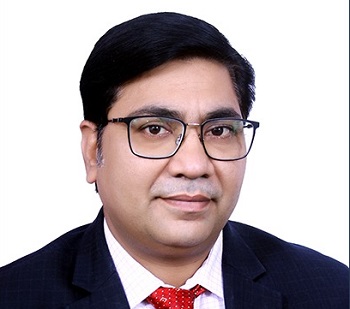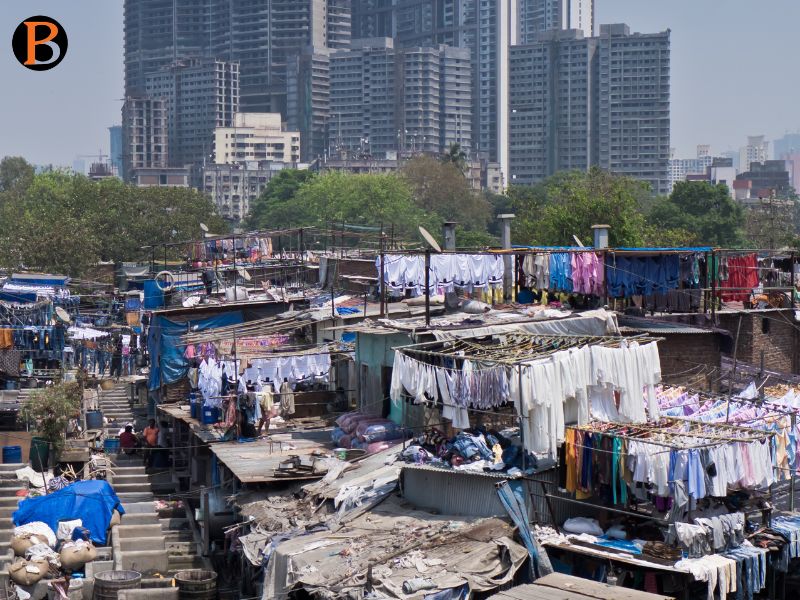.png)

Alok Kumar Mishra is a professor at the University of Hyderabad, researching financial economics and public policy.
January 31, 2025 at 12:46 PM IST
This article is based on a recent study* by him analysing the progress of ten major Indian cities in fulfilling SDG-11 while also assessing the living conditions of slum inhabitants in six of them.
Urbanisation is a double-edged sword. While it promotes economic growth and accounts for more than 80% of global GDP, it also exacerbates inequities, particularly in developing countries like India. As India continues to urbanise, the difficulties of slum proliferation, insufficient housing, and restricted access to essential services persist, jeopardising the country's progress toward attaining Sustainable Development Goal 11 (SDG-11), which aims to make cities inclusive, safe, resilient, and sustainable. With the Union Budget 2025 on the horizon, there is an urgent need for the Government of India to prioritise inclusive urban development, ensuring that the advantages of urbanisation reach all citizens, especially the urban poor.
India's metropolitan areas drive economic expansion but also house some of the world's largest slum populations. According to the Registrar General of India, more than 33,510 slums were identified in 2012, sheltering millions in substandard circumstances. These slums, frequently characterised by poor sanitation, overcrowding, and limited access to critical amenities, are a sharp reminder of the disparities in urban India.
Despite their harsh living conditions, slum inhabitants are important in metropolitan economies. They supply crucial services, such as household work and construction labour, that sustain urban growth. However, their contributions are rarely recognised, and their living conditions remain deplorable. The contradiction of urban affluence coexisting with extreme poverty raises serious concerns about the long-term sustenance of India's urbanisation model.
Urban Landscape
Sustainable Development Goal 11 (SDG-11) strives to make cities more inclusive, safe, resilient, and sustainable. However, the analysis finds that current indices, such as NITI Aayog's SDG Urban India Index and the Ease of Living Index, lack strong procedures and comprehensive metrics specific to SDG-11. To close this gap, the study offers a new set of indicators based on a novel Shannon-Entropy Weighting approach that evaluates cities' progress on SDG-11’s four core pillars: safety, inclusivity, resilience, and sustainability.
The findings are revealing. Bengaluru, dubbed India's Silicon Valley, is first in safety but fares poorly in slum-specific outcomes. Similarly, Chennai excels at resilience but has problems with inclusion. On the other hand, Kolkata, which rates low in overall sustainability, does an excellent job of providing housing and living conditions for slum residents. These inequalities emphasise the fragmented nature of urban development in India, where macro-level successes can conceal micro-level failures.
The Slum Reality
To supplement the macro-level research, the study performed a primary survey of 611 households from 30 slums in six cities: New Delhi, Bengaluru, Mumbai, Kolkata, Hyderabad, and Chennai. The survey measured four main dimensions: housing characteristics, living conditions, access to basic services, and the efficacy of government programmes.
The results offer a bleak picture. Despite Bengaluru’s high safety score, slum dwellers confront inadequate housing, poor sanitation, and restricted access to healthcare. In contrast, Kolkata, which has a low overall sustainability rating, provides significantly better housing and living conditions for its slum residents. Hyderabad stands out for its efficient implementation of government schemes like the Pradhan Mantri Awas Yojana (PMAY) and Swachh Bharat Mission (SBM), improving slum dwellers' access to housing and sanitation. The study also revealed that a key scheme like Atal Mission for Rejuvenation and Urban Transformation (AMRUT 2.0) saw limited coverage in the cities surveyed.
Dual Economy
The study's most notable discovery is the dual economy phenomenon in urban India. Those who rank high on macro-level sustainability indices frequently overlook the requirements of their slum communities. In contrast, those with lower overall sustainability scores may perform better in tackling slum-specific concerns. This disparity highlights the economic inefficiencies of unequal urban growth. Urban inequality causes underutilisation of human capital in slum regions, which reduces overall production. Investments in slums can spur inclusive growth by lowering the economic costs of urban poverty and inequality.
Policy Implications
The study provides numerous policy recommendations to help close the gap between macro-level urban growth and micro-level slum realities:
Governments must integrate slum growth into urban sustainability goals through inclusive planning, regular slum audits, and successful rehabilitation initiatives.
A more comprehensive set of SDG-11 indicators, including slum-specific data, is needed to allow for improved tracking and monitoring at the city level.
Public-private partnerships (PPPs) should be incentivised for slum rehabilitation and infrastructure development.
A periodic Urban Poor Quality of Living (QoL) Survey should be conducted to assess slum dwellers’ living conditions and inform targeted policy interventions.
Budget Expectations
As the Government of India prepares the Union Budget 2025, it must prioritise inclusive urban development to bridge the urban divide. The High-Powered Executive Committee (HPEC), led by Dr. Isher Ahluwalia in 2011, estimated that urban infrastructure investment needed (at 2009-10 prices) was about ₹39.2 trillion over 20 years, up to 2031. Efficient allocation and utilisation of funds remain crucial.
Key expectations include:
- Increased allocation for slum rehabilitation and upgradation, especially under PMAY and AMRUT 2.0.
- Urban infrastructure investment as a share of GDP should increase to at least 1.1%, as recommended by HPEC 2011.
- Strengthened urban planning frameworks, with City Investment to Innovate, Integrate and Sustain (CITIIS 2.0) supporting slum development.
- Greater focus on public health and sanitation, with increased funding for SBM and the National Urban Health Mission (NUHM).
- Resilient and green urbanisation, with monitoring by the Ministry of Housing and Urban Affairs (MoHUA) and the Ministry of Environment and Forests (MoEF).
- Expansion of PPPs for slum development, leveraging the Urban Infrastructure Development Fund created in 2023
The Road Ahead
While cities like Bengaluru and Chennai rank well in overall sustainability, they fall short in addressing slum needs. Kolkata and Hyderabad, despite broader challenges, demonstrate that targeted efforts can enhance slum living standards.
As India continues to urbanise, the Union Budget 2025 must ensure equitable resource allocation and inclusive planning. Bridging the urban divide is not just a moral imperative but an economic necessity. Only by addressing urban inequalities can India’s cities truly become inclusive, safe, resilient, and sustainable.
This article is based on a recent study* by Prof. Alok Kumar Mishra of the School of Economics at the University of Hyderabad, which analyzed the progress of ten major Indian cities in fulfilling SDG-11 while also assessing the living conditions of slum inhabitants in six of them. The study found a worrying disparity between macro-level urban development and the micro-level realities of the urban poor. As the government develops its 2025 budget, it must address the urban gap by allocating resources and enacting laws that encourage fair and sustainable urban development.




